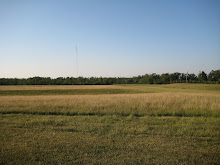Doubts on IMF estimate
It looks like the IMF (or everybody else except me?) underestimates the severity of damage to Japan's economy due to the earthquake and its aftermath. It's appropriate that the IMF has downgraded its 2011 growth forecast of Japan's economy. But the problem is how much. They initially claimed that the country grows 1.6% in 2011, but has changed it to 1.4%, which means they only slashed 0.2 percentage points.
Anyway, my question is: if the damage amounts to 3-5% of GDP, be it from the IMF or Japan, why did the IMF cut only 0.2 percentage points from the previous estimate? Do they forecast the V-shaped recovery in the latter half of the year?
I don't know how they calculate their estimation, but the anecdote abounds on the lingering disruption of production among Japanese makers like here and here. Uncertainty would likely redefine the coming moment.
The International Monetary Fund has cut its forecast of Japan's economic growth due to the country's devastating earthquake and tsunami.By the way, I have a problem in the AP report quoted above. It says
Japan's economy should grow by 1.4 percent this year, down 0.2 percentage points from its pre-quake outlook, the IMF said in a report on the global economic outlook. It cited damage to factories, power outages and other disruptions from the March 11 quake and tsunami, which are believed to have killed more than 25,000 people.
The Washington-based IMF also expressed confidence in Japan's ability to recover, raising its forecast for next year's growth to 2.1 percent, up 0.3 percentage points from its earlier estimate.
The IMF said its forecast assumes that power shortages and an unfolding nuclear crisis triggered by the tsunami are resolved in a few months. It was released just hours before Japanese authorities raised the severity level of the nuclear crisis to rank it on par with the 1986 Chernobyl disaster. It was unclear what impact that change might have on the economic impact of the crisis.
Estimates of damage to Japan's capital stock are 3 to 5 percent of gross domestic product, or roughly twice that suffered due to the 1995 Kobe earthquake, the IMF said.
"This figure, however, does not account for the effects of possible power shortages and ongoing risks associated with the crisis at the Fukushima Daiichi nuclear power plant," the report said.
The Japanese government has estimated the cost could reach $309 billion, making it the most expensive natural disaster on record.
The IMF cautioned that once reconstruction is under way, Tokyo needs to focus on reining in public spending and its spiraling debt. Japan's government debt is over 200 percent of GDP and the Fund said that could climb to nearly 230 percent this year.
"While the immediate concern in Japan should be to support reconstruction, measures that support a reduction of its high public debt ratio over the medium term need to be specified to maintain the strong confidence of its investor base," the report said.
Estimates of damage to Japan's capital stock are 3 to 5 percent of gross domestic product, or roughly twice that suffered due to the 1995 Kobe earthquake, the IMF said.It's correct. The IMF says so. But it's a little bit different. According to the original IMF report,
Official estimates of the damage to the capital stock are about 3 to 5 percent of GDP, roughly twice that of the 1995 Kobe earthquake.In this context, "Official" doesn't mean "IMF official". It implies "Japanese official". In fact, Japanese government estimated the damage at 1.6 to 2.5 trillion yen in late March (in Japanese), which is roughly the same as 3 to 5% of GDP. It's doubtful that the IMF assessed on their own.
Anyway, my question is: if the damage amounts to 3-5% of GDP, be it from the IMF or Japan, why did the IMF cut only 0.2 percentage points from the previous estimate? Do they forecast the V-shaped recovery in the latter half of the year?
I don't know how they calculate their estimation, but the anecdote abounds on the lingering disruption of production among Japanese makers like here and here. Uncertainty would likely redefine the coming moment.
Labels: Japan




0 Comments:
Post a Comment
Subscribe to Post Comments [Atom]
<< Home